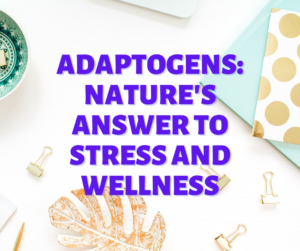Feeling constantly drained? Even after a full night’s sleep, do you feel like you’re running on fumes? You’re not alone. Many people struggle with low energy and relaxing. This is where Non-Sleep Deep Rest (NSDR) can help. NSDR offers a way to deeply recharge, even if you can’t get more sleep.
Table of Contents:
- What is NSDR?
- Understanding the Science Behind NSDR
- The Benefits of NSDR Practice
- Who Can Benefit from NSDR?
- How to Practice NSDR
- NSDR vs. Napping
- Conclusion
What is NSDR?
NSDR is a practice designed to guide your mind and body into deep relaxation. It mimics the restorative benefits of sleep while you’re awake. It’s like a power nap without the grogginess. Neuroscientist Dr. Andrew Huberman coined the term NSDR, though the practice itself builds on ancient techniques, especially yoga nidra.
Understanding the Science Behind NSDR
NSDR shifts your nervous system from stress (sympathetic nervous system) to calm (parasympathetic nervous system). As you relax, your brain waves slow down. Your thoughts quiet, and stress hormones decrease.
In simpler terms, you swap “fight-or-flight” for “rest and digest.” This shift reduces stress and tension, both physically and mentally. Doing NSDR regularly can bring a variety of potential benefits and contribute to better mental health.
How NSDR Works
NSDR typically involves lying down comfortably and listening to a guided meditation. These meditations can be audio or video recordings and range from 10 to 20 minutes.
Relaxation techniques facilitate this change. These usually include guided visualizations, body scans, and breathwork.
Visualization involves picturing calming scenes. Body scans involve focusing on different body parts. Deep, controlled breathing slows heart rate and promotes relaxation. Through these practices, NSDR decreases sympathetic nervous system activity and increases parasympathetic activity. This leads to measurable changes, like lowered blood pressure and heart rate.
The Benefits of NSDR Practice
The benefits of NSDR are similar to yoga nidra (yogic or psychic sleep). Research on yoga nidra shows many possible health improvements. Regular practice may improve physical and mental well-being. Potential benefits include better sleep and lower stress, potentially even boosting creativity. Some benefits are immediately useful; others feel life-changing.
Reduced Stress and Improved Sleep
Do you struggle to relax even during downtime? Dr. Elissa Epel notes that many don’t truly rest, even when off work. NSDR helps achieve deep rest, countering baseline stress.
Studies show NSDR can lower stress and anxiety. One study found students practicing yoga nidra significantly reduced stress and improved self-esteem.
Besides stress reduction, NSDR can also improve sleep quality. It can be tough to fall asleep with racing thoughts. A pre-bedtime NSDR session helps quiet the mind, enabling faster sleep and deeper relaxation. A 2022 study found regular yoga nidra increased sleep duration. It may be beneficial to those seeking quality sleep and as an aid for falling asleep faster.
Enhanced Cognitive Function and Creativity
Does taking a break hinder creativity? Relaxation practices like NSDR can reset your brain. This frees up cognitive resources, enhancing cognitive function and dopamine levels. This neurotransmitter is essential for memory and a clear mind, facilitated by balanced brain wave states during NSDR.
Many report increased mental focus after incorporating relaxation into their routines. This highlights how NSDR enhances relaxation and, based on studies, even neural networks, improving neural plasticity.
When your mind and body rebalance after chronic stress, creativity improves. Regularly practicing yoga nidra may help promote deep relaxation and positively influence mental health.
Who Can Benefit from NSDR?
Almost anyone can benefit from NSDR. Those with busy schedules, stress, or racing thoughts may find it especially helpful. While NSDR isn’t a substitute for quality sleep, it can help with mild insomnia. Many find it improves their sleep.
Research suggests NSDR can be part of an approach to relaxation for sleep disorders. Even Google CEO Sundar Pichai uses NSDR for relaxation. He’s publicly shared how NSDR practices help him de-stress and unwind.
How to Practice NSDR
Ready to try NSDR? Practicing yoga nidra is surprisingly simple. The key steps for NSDR are similar:
- Find a Quiet and Comfortable Spot: Choose a distraction-free area. Your bedroom, a quiet corner, or even nature can work. Comfortable clothing, calming scents (like lavender), and a weighted blanket can enhance the experience.
- Choose Your Guide: Many guided NSDR meditations exist, from short 10-minute sessions to longer ones. Andrew Huberman offers several online. YouTube, Spotify, and meditation apps have numerous options. Find a voice and style you like.
- Get Comfortable: Lie on your back, palms up (corpse pose). You can also sit.
- Set an Intention: Consider an affirmation, phrase, or sentence to give your practice intention. Repeat it before starting. Return to it if your thoughts wander.
- Follow the Guidance: Once you’ve chosen a meditation, let the guide lead you. Close your eyes and stay open-minded.
- Body Scan: Pay attention to sensations in your body. Tense and release various body parts to relax them.
- Visualization: Visualize calm, comforting imagery to go deeper into the practice. Engage your brain and deepen relaxation, and even possibly boost immune function as research studies are still underway for relaxation’s clinical relevance.
- Focus on Breath: Deep, slow breathing activates the parasympathetic nervous system. This reduces stress hormones like cortisol, promoting calm and safety. Notice how each exhale lengthens. This trains your body to relax more easily, even without the guided practice. Doing NSDR helps with falling asleep, may lead to more personalized guidance in the future, and encourages exploring new approaches to improving sleep, for the many that do not enter deep rest at night. This helps you relax, reduce stress, sleep, boost cognitive functions like mental clarity, memory and reduce inflammation. If inflammation in the body, brain, gut and other systems, and hormones are already part of personalized treatment plans by medical doctors then consider NSDR or something similar. Consult a medical professional.
NSDR vs. Napping
Both NSDR and napping offer rest, but their effects differ. Napping involves sleep, which can cause grogginess if it exceeds 20 minutes. NSDR keeps you consciously relaxed and alert, leaving you energized and refreshed.
Consider NSDR as a relaxation practice more profound than some naps. Many believe it to be better and some think of this term nsdr as being another term similar to deep rest and an umbrella term that includes any guided meditation that gets people deeply relaxed. These are separate relaxation techniques but for some non-sleep deep rest is one way among other things. For others, they may have other methods and they’ll feel relaxation even from something called non-sleep deep rest or non-sleep deep. Others do not want guided meditation with any spiritual connotations for them non-sleep deep rest (nsdr) might be better. Those relaxation practices that improve cognitive functions, decrease blood pressure and improve overall health and longevity do offer several potential benefits as per several sources from leading university labs around the globe. Andrew Huberman coined this term nsdr at his huberman lab and often says to enter deep, quality sleep, you must first feel relaxation, be more parasympathetic than sympathetic and practice yoga and non-sleep deep rest nsdr regularly. Relaxation benefits abound from quality and long deep sleep, however Andrew Huberman has said repeatedly that most Americans are so sleep-deprived they must first enter a state of being sympathetic to be in the right mindset for the next stages. These include quality rest from relaxing before any sleep practice (non-sleep deep rest). Practicing yoga and practicing yoga nidra can also be of great benefit in conjunction. One study of college students showed improvement in academic performance as they became better at mental performance during exams when they incorporated meditation as a form of yoga nidra as well as something called yogic, short for yogic sleep. Other studies were published in The International Journal of Yoga which studied other aspects.
Conclusion
In our busy world, true relaxation can be elusive, and sleep is sometimes a struggle. NSDR provides deep, meaningful restoration efficiently. It’s easier than formal yoga, as it removes some of the spiritual aspects of yoga nidra.
NSDR, an umbrella term encompassing relaxation techniques, offers a potent way to combat stress and enhance well-being. Its focus on achieving a deeply relaxed state through guided meditation, including techniques like body scans and guided imagery, provides numerous potential benefits. These benefits extend to various areas, including improved sleep quality, reduced stress and anxiety, enhanced cognitive function, and increased creativity. Unlike traditional napping, NSDR promotes an alert yet deeply rested state, contributing to a sense of rejuvenation without grogginess.

